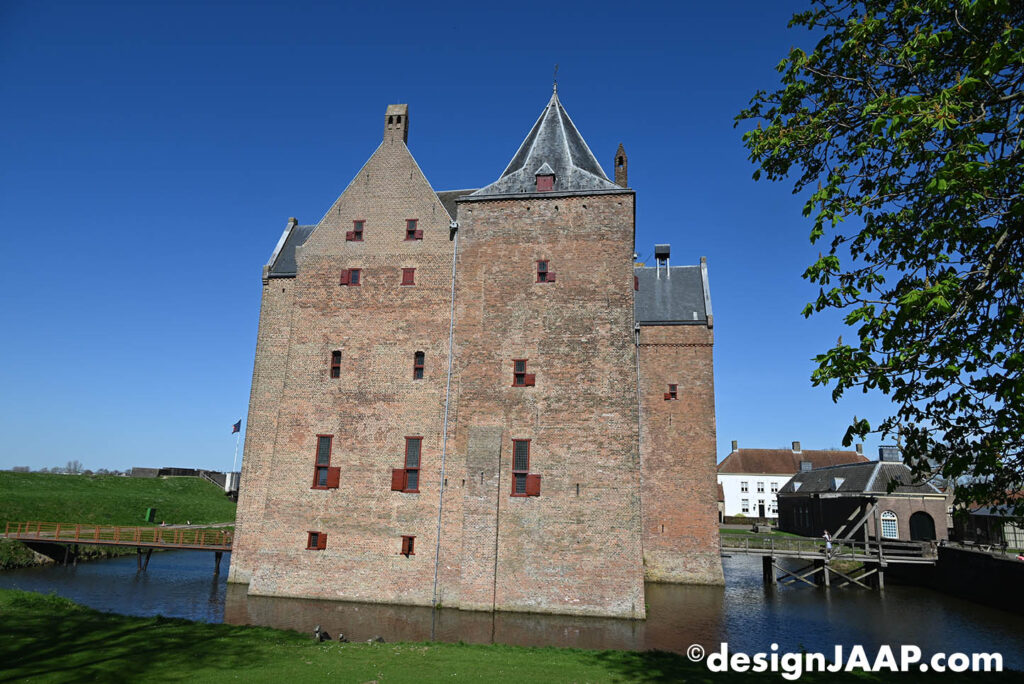Loevestein Castle (Dutch: Slot Loevestein) is a medieval castle in the municipality of Zaltbommel, Gelderland, the Netherlands.

The castle was built by the knight Dirk Loef of Horne between 1357 and 1397. Loevestein is a water castle that was built between 1357 and 1368. It was built in a strategic location in the middle of the Netherlands, where the Maas and Waal rivers come together (just west of current day villages of Poederoijen and Brakel, in the municipality of Zaltbommel, in Gelderland). At first it was a simple square brick building, used to extract tolls from trading vessels plying the rivers. By 1372, the castle was under control of the Counts of Holland. In the 16th century (around 1575, on orders given by William the Silent) it was expanded to a larger fortress surrounded by earthen fortifications with two (later three) stone bastions on the northern side, two moats, an arsenal, and barracks for a commander and soldiers, and castle was integrated into the Hollandic Water Line.
From 1619 the castle became a prison for political prisoners. One famous inmate was the eminent lawyer, poet and politician Hugo de Groot (Hugo Grotius) often presented as the “father of modern international law”, who was serving a controversially imposed life sentence from 1619, over his involvement in the controversies over religious policy of the Dutch Republic.
Here is a photographic impression of Loevestein Castle.